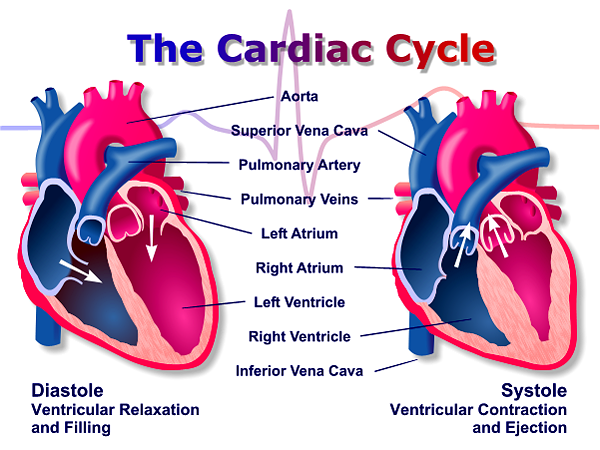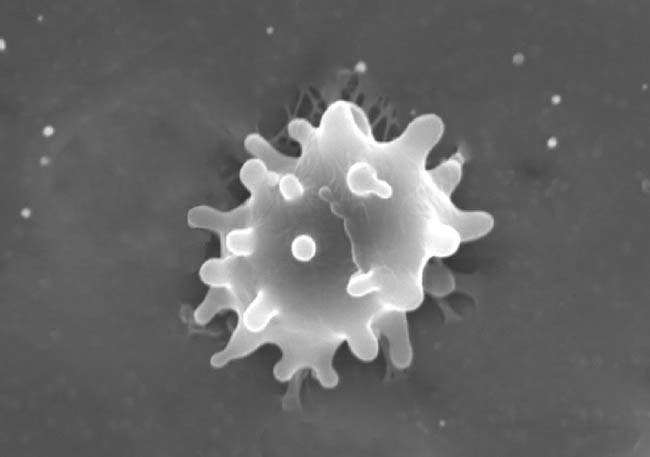The complete cycle of contraction and relaxation of the heart is called the cardiac cycle. The contraction phase is called systole, and the relaxation phase is called diastole.
 Heart rate is the rate of contraction per minute, and the stroke volume is the amount of blood pumped by the left ventricle during each contracion.
Heart rate is the rate of contraction per minute, and the stroke volume is the amount of blood pumped by the left ventricle during each contracion.There are four heart valves and two atrioventricular (AV) valves between each atrium and ventricle, which prevent the back flow of blood into the atria; there are also two semiulnar valves-one located at the entrance to pulmonary artery and the second at the entrance to the aorta.
 Regulation of the Heartbeat
Regulation of the HeartbeatThe sinoatrial (SA) node is the pacemaker of the heart. It is located in the upper wall of the right atrium. It stes the rate at which cardiac muscle cells contract.
 The AV or atrioventrical node, located in the lower wall of the right atrium, delays the impulses from the SA node to allow the atria to completely empty before the ventricles contract.
The AV or atrioventrical node, located in the lower wall of the right atrium, delays the impulses from the SA node to allow the atria to completely empty before the ventricles contract.The Lymphatic System and Blood
The lymphatic system is responsible for returning lost fluid and proteins from the blood back into the blood. Lymph is the lost fluid and proteins carried in the lymphatic system. Along a lymph vessesl are lymph nodes that filter lymph and attack viruses and bacteria, playing and important role in immunity.

Blood is actually a connective tissue made up of many kinds of cells in a liquid matrix called plasma. Plasma is mosly water, but it also contains ions, electrolytes, and plasma proteins. It also carries nutrients. Metabolic wastes gases and hormones.

In addition, blood plasma maintains the blood osmotic pressure and carries:
1. red blood cells (RBC) (erythrocytes)-which transport oxygen vea hemoglobin (an
iron containing protein), transport of water soluble lipids
 2. white blood cells (WBC) (leukocytees)- which are part of the immune system
2. white blood cells (WBC) (leukocytees)- which are part of the immune system 3. platelets- are fragments of cells that are responsible for blood clotting and immune reponses
3. platelets- are fragments of cells that are responsible for blood clotting and immune reponses Blood contains a soluble plasma protein called fibrinogen, which forms clots when it is converted to its active form, fibrin
Blood contains a soluble plasma protein called fibrinogen, which forms clots when it is converted to its active form, fibrinBlood clotting involves:
-the activation of prothrombin and thrombin
-adhesion of platelets
-clottin factor releases by clumped platelets
 Questions
Questions1. Heart rate is
a. the amount of blood pumped by the left ventricle during contraction
b. the contraction phase also called systole
c. the rate of contraction per minute
d. the relaxation pase also called diastole
2. Plasma is
a. mostly water
b. carrie white blood cells
c. carries red blood cells
d. carries platelets
e. All of the above
3. Fibrinogen is
a. protein involved in coagulation
b. network of capillaries in a tissue or organ
c. liquid matrix of blood in which the cells are suspended
d. iron-containing protein in red blood cells
Answers:
1.c
2. e
3. d
No comments:
Post a Comment